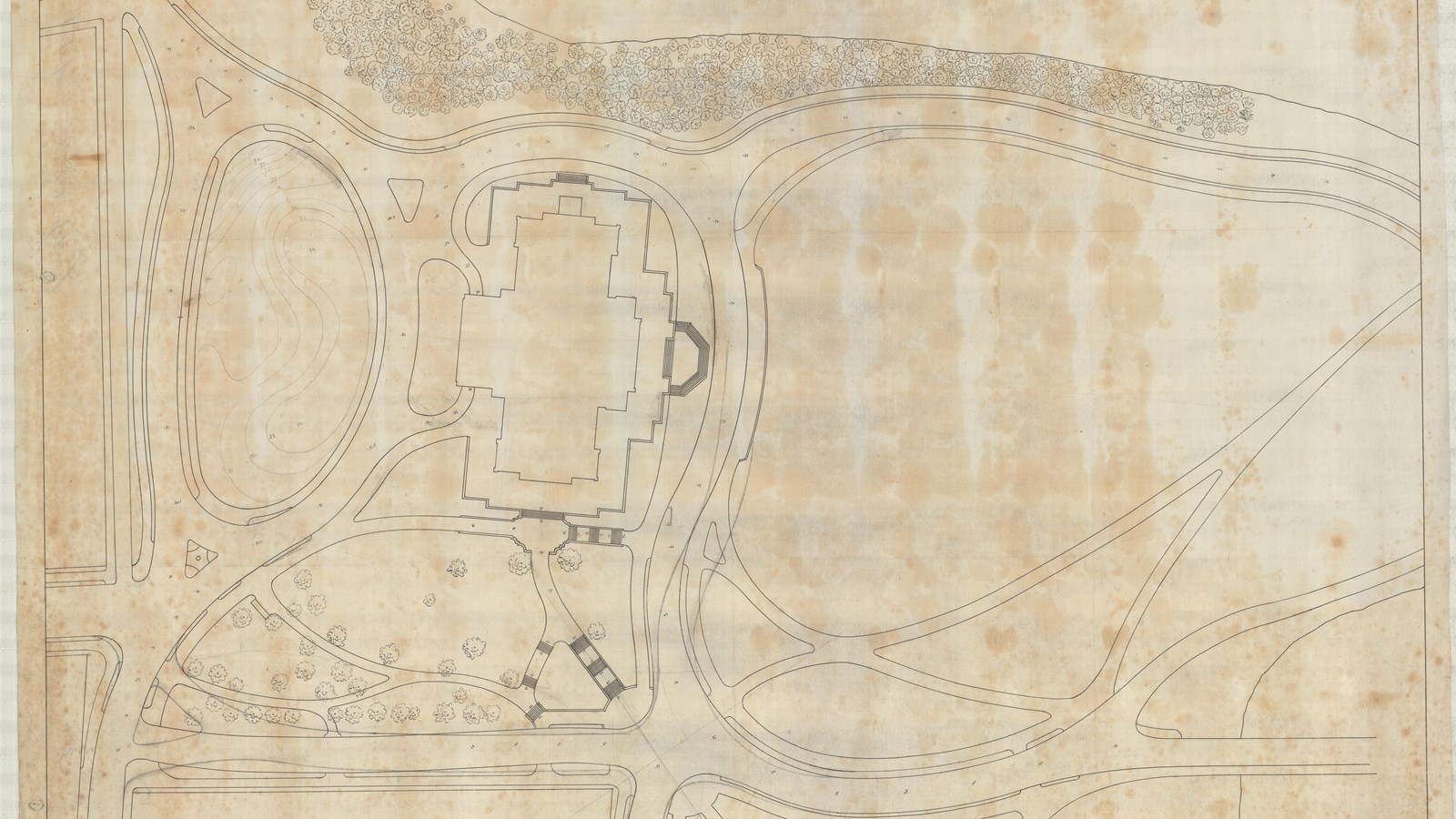Last updated: June 11, 2024
Place
State House

Olmsted Archives
Quick Facts
In 1893, John Charles Olmsted was invited to his father’s home state of Connecticut to advise on improvements to the State’s Capitol Grounds, with a particular focus on Trinity Street, drives and terrace alignments, plantings to screen the nearby railroad, and various monuments. John Charles never got a true chance to work on what he called the State House due to his death in 1920, at which point firm members Edward Whiting and James Dawson became involved.
Between 1925 and 1932, Whiting and Dawson’s planning efforts included rearranging surrounding roads and bridges to increase accessibility to the State House. Work picked up again in 1939, with Whiting and Olmsted Brothers firm member William Marquis. Up until 1947, the pair were developing new entrance plazas and terraces for the State House, as well as relocating sculptures and memorials, and improving the connection between the State House and nearby Bushnell Park.
Source: "State House," Olmsted Online
For more information and primary resources, please visit:
Olmsted Research Guide Online
Olmsted Archives on Flickr
Between 1925 and 1932, Whiting and Dawson’s planning efforts included rearranging surrounding roads and bridges to increase accessibility to the State House. Work picked up again in 1939, with Whiting and Olmsted Brothers firm member William Marquis. Up until 1947, the pair were developing new entrance plazas and terraces for the State House, as well as relocating sculptures and memorials, and improving the connection between the State House and nearby Bushnell Park.
Source: "State House," Olmsted Online
For more information and primary resources, please visit:
Olmsted Research Guide Online
Olmsted Archives on Flickr
